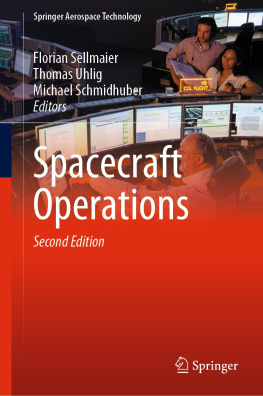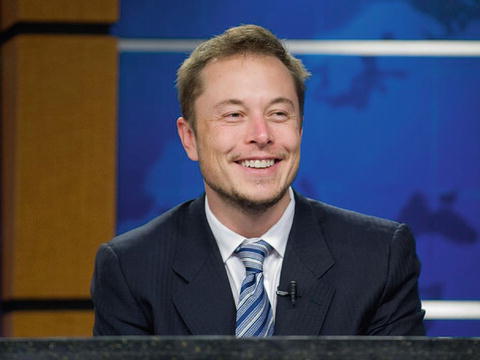One mans mission
In 2015, Elon Musk doesnt need to be introduced. Like Wernher von Braun, Musk is a legend in his own lifetime, and deservedly so. A billionaire many times over thanks in part to PayPal and Tesla, Musk is a transformational technologist who has plans to retire on Mars. Why? Not to inspire or to make money. Musks aim is nothing less than to make us a multi-planet species. For Musk, colonizing Mars is extinction insurance, and he wants to send a manned mission sooner rather than later. And cheaper. As he points out in interviews, the Curiosity rover that is ambling around on Mars cost more than US$3 billion. Musk reckons, for that money, we should be sending humans and he has a plan to do exactly that. Shortly before SpaceX was founded, Musk remembers a late night spent searching for a NASA website that outlined the plans for a manned mission to Mars. It was 2001 and the Shuttles were still flying at a flight rate that was sufficient to persuade the public that manned spaceflight was still a serious concern. Now, in 2015, with the Shuttle a rapidly receding memory, the notion that manned spaceflight is a vibrant arena is pure delusion. In 2015, American, European, and Canadian astronauts climb on board the Soyuz for their ride to the International Space Station (ISS), and there arent many people who want to watch spacefarers climb into an aged space vehicle to a destination that is 1,000 times closer to Earth than the Moon. Mars? That isnt even on most peoples radar. But many people have accepted this as the norm. A manned mission to Mars? That wont happen for decades, especially if we rely on a government to get us there. A few decades ago, following the Moon landing, the thinking was different. The Apollo program would springboard us to Mars and visits to the Moon and the Red Planet would become routine. Permanent bases would be built on the lunar surface and, after settling on Mars (Figure ), we start shooting for the outer planets. Nothing was impossible. Except that it was.
1.1
Musks goal is to colonize Mars. Credit: NASA
Back in 2001, when Musk (see sidebar) discovered there were no manned Mars missions on the books, he reckoned the US was no longer interested in manned space exploration. But two years later, the Columbia accident proved otherwise. Still, the budget for NASA had been atrophying at an alarming rate since the mid-1960s, when the agency received 4.4% of the federal budget. In the 2000s and 2010s, the NASA budget was just 0.5% of the total US budget, which is part of the reason Musk couldnt find any information about a manned Mars mission. Appalled at the lack of progress, Musk began dreaming up a manned Mars mission of his own, but first he needed to build a rocket company, and so SpaceX was born. The story of this visionary company is told in SpaceX : Making Commercial Spaceflight a Reality , which was written by this author and published in 2013, so what follows is a brief overview of how Musk made his company the success that it is today.
Elon Musk
Elon Musk is a genius on a mission. Those who follow the goings on in the world of commercial spaceflight will know all about the Falcon 9 and Dragon, and may assume Musks primary goal is to ferry astronauts to the ISS, because this is the story the media seem to focus on. But Musks vision extends far beyond low Earth orbit (LEO). He wants to transport people to Mars. Thousands of them. And a big part of that plan is SpaceX, Musks rocket company that is based in El Segundo, California. SpaceXs hangar is a hangar like any other, except SpaceXs place of work happens to be the site of a revolution in the way spaceflight is conducted. At the time of writing, SpaceX had been around for just 13 short years but, in that time frame, it has achieved more than most national space programs. It has developed its own rocket engines, launcher, and spacecraft, and is now poised to deliver astronauts to the ISS. With an employee roster of little more than 1,000, SpaceX has been created thanks to one man and one man only: Elon Musk.
Having bought his first computer when he was 10, Musk, who lived in South Africa as a youngster, learned how to write commercial software and put that knowledge to good use by writing a space what else? game called Blastar . He was only 12 years old. At 17, he traveled to Canada before beginning life as a student at the University of Pennsylvania. He gained one degree in physics and one in economics, and then headed to Stanford in 1995, where he spent just 48 hours before deciding it would be more exciting to start an internet company. And so Zip2 was born. Zip2 produced publishing software. Musk sold the company in 1999 for a cool US$300 million and then founded X.com, which eventually became PayPal. Perhaps youve heard of it? Musk sold PayPay to eBay for US$1.5 billion in 2002.
For most people, this would be enough. Sit back, head for Tahiti, and soak up your success in the sunshine. But not Musk. Becoming a billionaire was just the beginning because, besides being extremely rich, Musk is also very, very single-minded. And one of his goals was to make space affordable and along the way send people to Mars. Never mind that these goals have eluded governments for decades. Musk reckoned the governments way of doing business in space was inefficient in the extreme and he decided he would do it more affordably. And thats what he did. His rockets place cargo into space at a fraction of the cost of his rivals and his companys development of Dragon has been lightning fast.
Inevitably, all this success has cast Musk in the media spotlight. Not surprising really, given that Musk was the inspiration for Iron Man s Tony Stark (Musk made a cameo appearance in Iron Man 2 ), but Musk would rather spend his time dreaming up how he can get us to Mars than answering questions for a magazine. After all, this is a man who spends 100 hours a week at work and logging so many hours means there just isnt time to indulge the media or spend time telling people about his private life (Musk has neither a Facebook nor a Twitter account). While he is a businessman and a celebrity, the word that most accurately defines Musk is dreamer. He didnt create SpaceX to make another tonne of money. He created it as a stepping stone to help humanity on their way to Mars. He reckons we can get there in 20 years.
When SpaceX launched in 2002, Musk was trying to buy repurposed intercontinental ballistic missiles (ICBMs) for just US$7 million each. He had a number of meetings with the Russians and was close to purchasing three ICBMs for US$21 million, only to be told that the Russians meant US$21 million for one . Fed up of dealing with the Russians, Musk decided to build his own rocket. The challenges facing Musk were intimidating. Between 1957 and 1966, the US had sent 429 rockets into orbit, a quarter of which failed. And they had done this with nearly unlimited budgets. Undeterred, Musk started recruiting veterans from the aerospace world in El Segundo, California. One of his first employees was Tom Mueller, a leading propulsion expert. Mueller was followed by more rocket engineers joining the SpaceX cause. To run the day-to-day operations of his company, Musk hired Gwynne Shotwell (Figure ), who became SpaceXs seventh employee as Vice President of Business Development (today Shotwell is President).













